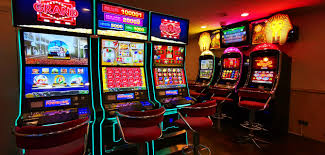The basic rules of the bingo game are very simple: the object is to match up the numbers on the cards with those drawn at random. The host of the bingo game marks the selected numbers with tiles, and the player who has the winning number calls out “Bingo!” or a variation of this phrase. The first person to match all of his numbers wins a prize. Generally, a bingo session lasts between two and three hours, and the prize can range from cash to other items, depending on the game.
The objective of the game is to place five or more markers on the game board in a horizontal, vertical, or diagonal pattern. The Caller rotates the spinner to determine the Bingo numbers, and a player records these numbers on his or her scorecard. The Caller then removes the plastic nib from the spinner, presses the spinner’s collar into the card, and distributes the Bingo cards to the players. A bingo game is never complete without a caller!
There are many reasons to play the bingo game, from the thrill of playing it to the chance to exercise your brain. Some research even suggests that the game keeps the brain in shape. In fact, Bingo players are generally more mentally agile than non-players. The game is believed to have originated in Italy around 1530, where it was popular as a Saturday lottery. After this, it was introduced to other countries, including France, where the French version of the game, known as Le Lotto, was first released. Eventually, the game evolved into Keno.
If you’re looking for a simple way to engage students in math, the bingo game is an excellent choice. It can be a fun activity for the whole class, or a useful revision tool. Students are invited to listen to prompts to identify the letters of the number they need on the card. The winner of the game is the person who covers the row with the most counters. When someone is able to cover all the squares on their bingo card, they call out “BINGO!”
In addition to the fun, the bingo game can also be a fundraiser. It’s common to find it featured in bars and nightclubs, and it’s increasingly popular as a social event. It’s become more than a fundraiser – it’s become a highly entertaining and fun activity for both players and hosts. Many bingo venues offer themed activities and cabaret performances to attract customers. The prizes are cash, so there’s no reason not to promote the game in a social setting.
Bingo’s history dates back to 1530 in an Italian lottery game. Lo Giuco del Lotto D’Italia is still played in Italy every Saturday. In the early 1800s, it reached the United States through a traveling carnival in Atlanta, Georgia. This game was originally known as Beano, and players marked their cards with a bean instead of numbers. In the 1920s, bingo games began popping up in the US as well.





